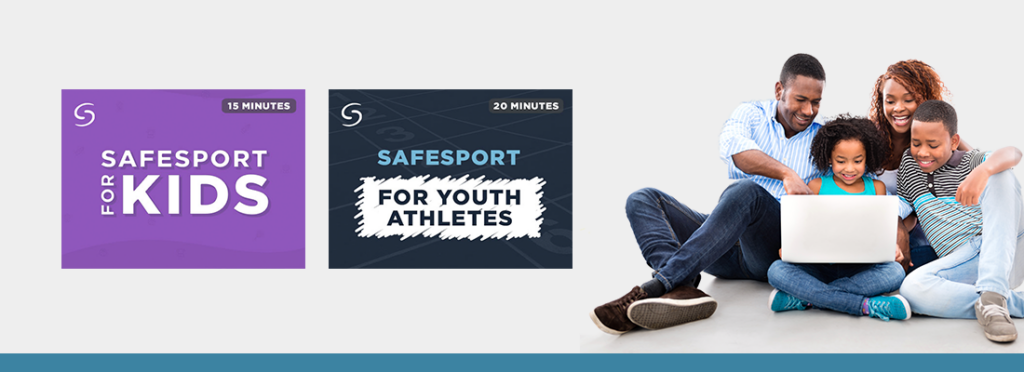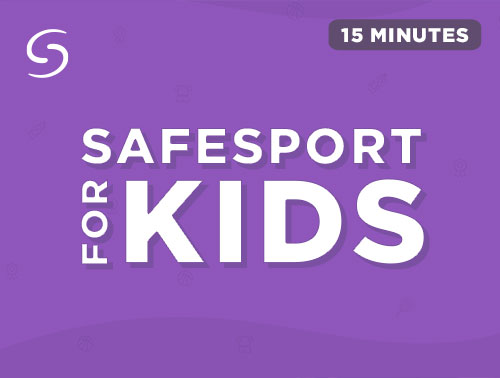Talk to Young Athletes About Abuse, Misconduct

Do you have a younger child just getting started in organized sport? How about a teenager who has moved up to more competitive athletic settings? Either way … that’s great! Youth sport participation can have lifelong positive mental and physical health impacts. It also means it’s time to start the discussion about what a safe, healthy sport experience should look and feel like to them.

SafeSport for Kids
Younger kids often don’t have the language skills necessary to articulate when a potentially unhealthy, inappropriate, or even abusive situation is occurring. “SafeSport for Kids” (for kids ages 5-12) is an entry point for you to have those important conversations.
This fun, interactive course is designed for parents to take with their children. The 15-minute training helps kids recognize all the fun things about sports. It gives voice to what is “cool” about their team, and when things are “not cool.” And it explains when a coach’s behavior crosses the line from modeling positive discipline into something that might be “out of bounds.”
The course features age-appropriate reading levels and narration, scenarios differentiated for age/maturity, and parent tips for continuing the discussion.

SafeSport for Youth Athletes
Taken with parental consent, the “SafeSport for Youth Athletes” (for youth 13-17) course helps teenagers understand their “rights” as young athletes: the right for their body to be safe and protected; the right to be safe and supported by their team; and the right to report abuse when it happens to them or someone on their team.
Teen athletes will learn to identify different forms of abuse, including physical and sexual misconduct and harassment.
The 20-minute course also covers:
- How to make sport environments more positive, safe, and respectful
- How to report abuse and other bad behavior
- How to help and support a friend who has experienced or witnessed abuse or inappropriate conduct
A positive sport experience starts with a respectful, supportive team atmosphere. The course lays out what a strong team looks like and uses “You be the ref” scenarios to help youth recognize unwelcome behavior from coaches and teammates.
Importantly, the training empowers teens with strategies for responding to and reporting harmful interactions. By intervening in a timely fashion to bullying or harassment, for example, athletes can send the message that negative behavior is not tolerated on the team.
When reporting misconduct, a teen can always confide in a trusted adult. Other options include talking to their school or program, or, depending on the severity of the incident, local law enforcement.
The Center’s catalog of trainings, some of which are required within the U.S. Olympic and Paralympic Movement, come with the quality parents can trust. The Center has delivered millions of trainings since our inception in 2017, with a goal of surpassing 5 million by the end of 2023. Be part of the solution. Get SafeSport® Trained and join our mission to end abuse in sport.
Please set up an account and select “SafeSport for Kids” or “SafeSport for Young Athletes” from the catalog to access the courses.
